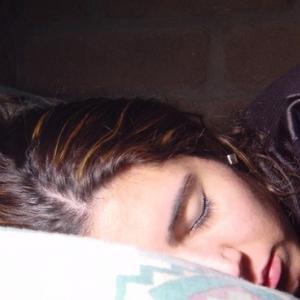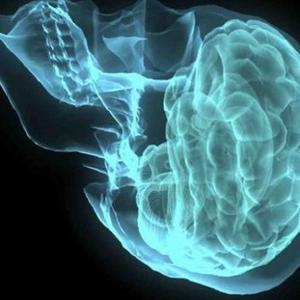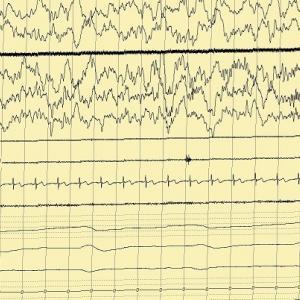According to the Rechtschaffen & Kales (R & K) Standard of 1968, deep sleep can be described as stage three of non-rapid eye movement sleep and is often referred to as “slow wave sleep”. There’s no clear difference between stages three and four; however, stage three has 20 to 50 percent delta activity while stage four has over 50 percent. Since the year 2008, the American Academy of Sleep Medicine no longer refers to stage four, and stages three and four have combined to create stage three. Therefore, a period of 30 seconds’ sleep, consisting of 20%-or-more slow-wave sleep, is now considered to be stage three. Slow wave sleep (deep sleep) is one of the Stages of Sleep.
What is Deep Sleep?
Deep sleep is the sleep stage that is associated with the slowest brain waves during sleep. Because the EEG activity is synchronized, this period of sleep is known as slow-wave sleep: it produces slow waves with a relatively high amplitude and a frequency of less than 1 Hz. The initial section of the wave is indicated by a down state; an inhibition period whereby the neurons in the neocortex are silent. It’s during this period that the neocortical neurons are able to rest. The next section of the wave is indicated by an upstate; an excitation period whereby the neurons fire briefly at a rapid rate. This state is a depolarizing phase, whereas the former state is a hyperpolarizing phase. In contrast with Rapid Eye Movement sleep, the main characteristics of slow-wave sleep are absent or slow eye movement, moderate muscle tone, and lack of genital activity.
Features of Deep Sleep
- EEG demonstrates delta waves (high amplitude, low frequency)
- Consolidation of memories
- High arousal threshold
- Presumed restoration of body and brain
Why Is Deep Sleep Important?
 Deep sleep is important for the consolidation of new memories, and is often referred to as “sleep-dependent memory processing”. Thus, individuals with primary insomnia will have impaired memory consolidation and won’t perform as efficiently as normal patients when completing memory tasks following a period of sleep. In addition, declarative memory is improved with slow-wave sleep, and this includes both semantic and episodic memory.
Deep sleep is important for the consolidation of new memories, and is often referred to as “sleep-dependent memory processing”. Thus, individuals with primary insomnia will have impaired memory consolidation and won’t perform as efficiently as normal patients when completing memory tasks following a period of sleep. In addition, declarative memory is improved with slow-wave sleep, and this includes both semantic and episodic memory.
A central model has been created on the assumption that long-term memory storage is promoted by interaction between the hippocampal and neocortical networks. Several studies have shown that, once subjects have been trained to learn a declarative memory task, there was a significantly higher density of human sleep spindles when compared to the non-learning control task. This occurs due to unconscious wave oscillations that make up the intracellular recordings from cortical and thalamic neurons.
Function of Deep Sleep
Human sleep deprivation studies seem to suggest that the principal function of deep sleep may be to give the brain time to restore itself from its daily activeness. An increase of glucose metabolism in the brain occurs as a result of tasks that require mental activity. Yet another function affected by slow-wave sleep is growth hormone secretion, which is always greatest at this stage; plus, it also creates both an increase in parasympathetic neural activity and a decrease in sympathetic neural activity.

In deep sleep, the highest arousal thresholds are observed; such as the difficulty of awakening by the sound of a particular volume. When a person awakens from slow-wave sleep, they’ll generally feel quite groggy, and cognitive tests after awakening do indicate that mental performance can be impaired for periods of up to 30 minutes when compared to awakenings from other stages. This phenomenon is known as “sleep inertia”.
There’s always a sharp rebound of slow-wave sleep after sleep deprivation, meaning that the next bout of sleep will not only include more slow-wave sleep than normal, but deeper slow-wave sleep. The previous duration of this stage, in addition to the duration of prior wakefulness, will determine the duration of slow-wave sleep. When determining the amount of slow-wave sleep in any given sleep period, the major factor to note is the duration of preceding wakefulness, which is typically related to the build-up of sleep-inducing substances in the brain.
Sleep Disorders During Deep Sleep
There are several sleep disorders and parasomnias that occur predominantly during slow wave sleep. Sleepwalking (somnambulism), night terrors (sleep terrors), bed-wetting (enuresis), sexsomnia, and sleep eating are all associated with slow wave sleep. Individuals with narcolepsy often have fragmented deep sleep.
Factors that Increase Slow-Wave Deep Sleep
Factors that have shown to increase slow-wave sleep in the sleep period that follows them include intense prolonged exercise and body heating, such as immersion in a sauna or hot tub.

It’s been shown in studies that slow-wave sleep is facilitated when brain temperature exceeds a certain threshold, and it’s believed that circadian rhythm and homeostatic processes regulate this threshold. An unusually low carbohydrate diet consumed over the short term in healthy sleepers promotes an increase in the percentage of slow-wave sleep, including a production in the percentage of dreaming sleep (REM sleep), when compared to the control with a mixed diet. It’s believed that these sleep changes could well be linked to the metabolism of the fat content of the low carbohydrate diet. In addition, the ingestion of antidepressants and certain SSRI’s can increase the duration of slow-wave sleep periods; however, the effects of THC on slow-wave sleep remains controversial. Total sleep time in these instances is often unaffected due to a person’s alarm clock, circadian rhythms, or early morning obligations.
How to Get More Deep Sleep
The most important thing that you can do to increase your amount of deep sleep is to allow yourself adequate total sleep time. Often, individuals will deprive themselves of adequate total sleep. In addition to reducing deep sleep, REM sleep is also shortened.
There is some data to suggest that vigorous exercise can increase or consolidate deep sleep. Some sleep specialists recommend aerobic activities like jogging, running, and swimming. For those who are prone to insomnia, it is best to exercise earlier in the day and not before bedtime.



